15 years one-stop China custom CNC machining parts factory
 618 |
Published by VMT at Jul 12 2025 | Reading Time:About 9 minutes
618 |
Published by VMT at Jul 12 2025 | Reading Time:About 9 minutes
Manufacturers and product designers often face a dilemma when selecting between 3CR13 steel and 440C stainless steel for knives, surgical tools, and other CNC-machined components. Both materials are stainless, both have desirable traits—and yet, choosing the wrong one can compromise performance, longevity, or cost-efficiency.
Imagine selecting a steel that rusts too quickly in a marine environment or one that's so hard it becomes brittle during high-impact tasks. These issues aren’t uncommon when the nuances between 3CR13 and 440C are misunderstood, especially in industries like food processing, medical devices, or precision tooling where material selection is critical.
This comprehensive comparison demystifies the key differences between 3CR13 and 440C stainless steel—from composition and mechanical properties to heat treatment, costs, and CNC machining behavior. Whether you need corrosion resistance, hardness, or cost efficiency, understanding these materials will help you make an informed decision.
The primary difference between 3CR13 steel and 440C stainless steel lies in carbon and chromium content. 440C has higher carbon and chromium levels, offering greater hardness, wear resistance, and corrosion resistance than 3CR13, making it ideal for high-performance applications requiring strength and longevity.
Choosing the right stainless steel is not just about numbers—it’s about application suitability, processability, and long-term reliability. In the world of stainless steel CNC machining, both 3CR13 and 440C offer distinct advantages. This article will walk you through their properties, pros and cons, machining characteristics, and cost-performance balance to help you select the best material for your CNC machining project.
Key Points (Summary of the Core Differences)
To help engineers, procurement specialists, and CNC machining factories quickly identify the best material for their needs, here is a concise summary of the main differences between 3CR13 steel and 440C stainless steel:
440C stainless steel contains more carbon (0.95–1.20%) and chromium (16–18%) than 3CR13 (0.26–0.35% C, 12–14% Cr). This results in higher hardness, better corrosion resistance, and increased wear resistance in 440C.
440C can reach 58–60 HRC after heat treatment, making it significantly harder and more durable than 3CR13, which typically maxes out at 52–54 HRC. This makes 440C more suitable for cutting tools, bearing parts, and wear-resistant applications.
While both are stainless steels, 440C offers superior corrosion resistance due to its higher chromium content. 3CR13 performs adequately in normal conditions but struggles in highly corrosive environments like marine or chemical applications.
3CR13 is easier to machine, weld, and polish than 440C. It is well-suited for basic CNC machining services, offering lower tool wear and quicker processing. 440C, due to its high hardness, can be more demanding on tools and machining time.
3CR13 is a low-cost stainless steel, making it attractive for high-volume or disposable products like budget knives or simple mechanical parts. 440C is more expensive but justifies its price through better performance in demanding conditions.
Best Uses:
Conclusion: If cost-efficiency and moderate performance are the priorities, 3CR13 is the right choice. For top-tier durability and resistance under harsh conditions, 440C stands out as the superior option.
3Cr13 steel is a martensitic stainless steel that offers a balance between hardness, corrosion resistance, and machinability. It belongs to the 400-series of stainless steels, and is widely used in moderate-performance applications where cost-effectiveness, basic corrosion resistance, and ease of manufacturing are essential.
From a compositional standpoint, 3Cr13 typically contains around 12–14% chromium and 0.26–0.35% carbon, with small amounts of manganese, phosphorus, and silicon. This chemistry allows it to be hardened through heat treatment, making it suitable for knife blades, cutting tools, and machine components that require decent wear resistance and edge retention.
One of the defining advantages of 3Cr13 is its affordable price and good processability. It can be easily forged, ground, and polished, which makes it ideal for mass production of CNC machining parts such as tool handles, decorative components, and consumer-grade knife blades. It also has moderate rust resistance, sufficient for indoor or lightly humid environments, but not ideal for marine or chemical use.
In the field of stainless steel CNC machining, 3Cr13 is favored for its ease of machining and lower tool wear. Its relatively low hardness in the annealed state allows faster cutting speeds, smoother surface finishes, and simpler post-machining treatments. That said, care must be taken during heat treatment to optimize hardness without compromising toughness or introducing brittleness.
Looking for durable yet economical materials for general-use CNC components? 3Cr13 steel CNC machining parts are a cost-effective solution provided by experienced CNC machining factories like VMT.
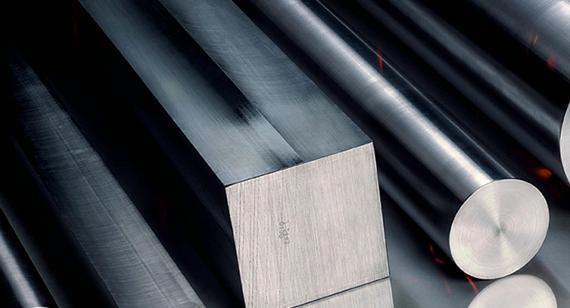
440C stainless steel is a high-carbon, high-chromium martensitic stainless steel known for its exceptional hardness, wear resistance, and corrosion resistance. As one of the highest-grade steels in the 440 series, it is a preferred material in demanding industrial applications requiring precision, durability, and strength.
Chemically, 440C typically contains 0.95–1.20% carbon and 16–18% chromium, making it one of the hardest stainless steels after heat treatment. It also includes minor amounts of manganese, silicon, and molybdenum, which further enhance its mechanical stability and corrosion resistance. This alloy can reach hardness levels of 58–60 HRC, enabling it to maintain a sharp edge and resist surface deformation under stress.
One of the standout attributes of 440C stainless steel is its excellent wear and abrasion resistance, which makes it ideal for cutting tools, surgical instruments, ball bearings, valve components, and other parts exposed to high friction and pressure. Its superior corrosion resistance also allows it to perform well in wet, salty, or chemically aggressive environments, making it a strong candidate for marine or chemical processing applications.
However, its high hardness also means 440C is more difficult to machine compared to lower-grade stainless steels. During CNC machining, it can cause faster tool wear, slower processing speeds, and higher production costs. As a result, it is best handled by experienced CNC machining factories that specialize in working with 440C stainless steel CNC machining parts.
Need high-performance parts that can handle extreme conditions? 440C stainless steel delivers exceptional performance in demanding CNC machining applications where hardness and corrosion resistance are critical.
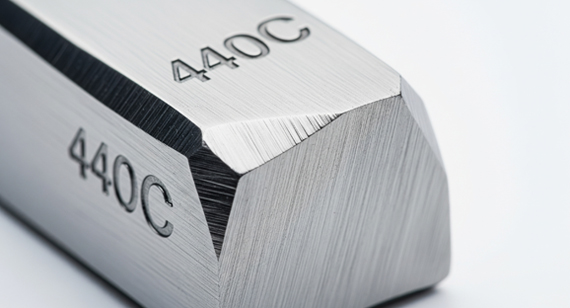
When comparing 3Cr13 steel and 440C stainless steel, it's essential to understand that these two materials serve different needs within the broader category of stainless steel. While both belong to the martensitic stainless steel family, their performance profiles differ significantly due to variations in chemical composition, mechanical strength, corrosion resistance, and CNC machinability.
3Cr13 is a lower-cost, mid-performance stainless steel used in applications where basic strength, ease of machining, and moderate corrosion resistance are sufficient. It’s popular for making budget knives, tools, and general CNC machining parts that don’t require extreme hardness or edge retention. On the other hand, 440C is a premium-grade stainless steel, designed for demanding environments that call for maximum hardness, wear resistance, and excellent rust protection. It’s widely used in surgical instruments, precision tools, marine hardware, and components requiring tight tolerances and mechanical durability.
The primary reason for these differences lies in their chemical makeup—440C contains significantly more carbon and chromium, enabling higher hardness and corrosion resistance. However, this also makes 440C more brittle and challenging to machine, requiring advanced CNC machining services and cutting strategies.
This section will break down the chemical composition, mechanical behavior, heat treatment response, physical properties, and machinability of each material. By the end of this comparison, product engineers and sourcing managers will have the clarity they need to select the optimal material based on performance requirements, environment, and budget.
Interested in how other materials compare? Visit our Material Comparison Center for more in-depth side-by-side stainless steel evaluations.
Chemical Composition of 3Cr13 Steel and 440C Stainless Steel
The key to understanding the performance differences between 3Cr13 steel and 440C stainless steel lies in their chemical composition. The elements that make up these alloys—particularly carbon and chromium—play a crucial role in determining properties such as hardness, corrosion resistance, machinability, and heat treatment response.
Both steels belong to the martensitic family, meaning they can be hardened through heat treatment. However, 440C has a much higher carbon content than 3Cr13, which directly contributes to its superior hardness and wear resistance. Meanwhile, 3Cr13 contains less chromium and carbon, making it more forgiving to machine and more affordable, but with limited performance in harsh environments.
In addition to carbon and chromium, both steels contain small quantities of manganese, silicon, and phosphorus that influence toughness, machinability, and oxidation resistance. Some grades of 440C may also include molybdenum, which enhances pitting resistance in chloride-rich environments.
Below is a detailed element-by-element breakdown of the chemical differences between 3Cr13 and 440C stainless steel, which will provide insight into their mechanical behavior and suitability for CNC machining.
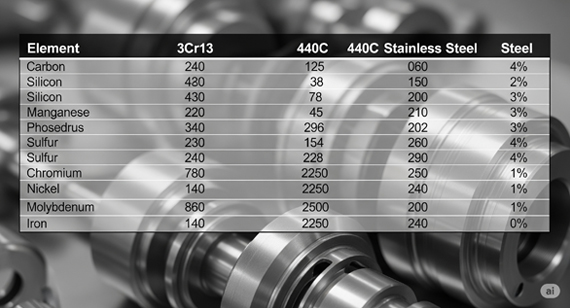
Carbon (C), %
Carbon is one of the most influential elements in steel alloys. In 3Cr13 steel, the relatively low carbon content results in moderate hardness, good toughness, and ease of machining. It makes 3Cr13 a versatile choice for low-cost applications such as consumer-grade tools, hardware, and budget-friendly knives.
In contrast, 440C stainless steel has a significantly higher carbon content, giving it the ability to reach very high hardness levels (58–60 HRC) after heat treatment. This makes it ideal for cutting tools, precision wear parts, and environments where edge retention and surface durability are critical. However, high carbon also reduces ductility and increases brittleness if not properly tempered.
Chromium (Cr), %
Chromium provides corrosion resistance, improves oxidation stability, and contributes to the formation of martensitic microstructures. Both steels contain enough chromium to be classified as stainless, but 440C’s higher chromium content gives it superior resistance to rust, especially in marine or acidic environments. 3Cr13 performs acceptably in mild or indoor environments but corrodes faster under harsh conditions.
Iron (Fe), %
Iron serves as the base element in both alloys, making up the bulk of the composition. It provides the structural matrix that binds the other elements. While not a performance differentiator, the balance of iron influences the alloy's density, magnetic response, and overall mechanical stability.
Manganese (Mn), %
Manganese improves toughness and deoxidation during the melting process. It helps steels become more forgeable and weldable. Both materials have similar manganese content, so it doesn't significantly alter performance differences between the two.
Molybdenum (Mo), %
Molybdenum is occasionally added to 440C to improve pitting and crevice corrosion resistance, particularly in marine-grade variants. While not always present, even small additions can enhance corrosion resistance under extreme conditions. 3Cr13 generally lacks molybdenum, making it less resistant in salt-heavy environments.
Nickel (Ni), %
Nickel enhances toughness and corrosion resistance, especially in austenitic stainless steels. While both 3Cr13 and 440C contain only small amounts of nickel, their performance is primarily dictated by chromium and carbon. Neither is considered high-nickel steel.
Nitrogen (N), %
Nitrogen may appear in trace amounts due to melting processes but doesn’t significantly influence performance in either alloy.
Phosphorus (P), %
Phosphorus is usually minimized in stainless steels, as excessive levels can cause embrittlement. Both steels maintain low phosphorus levels for optimal toughness and weldability.
Silicon (Si), %
Silicon acts as a deoxidizer during steel production and contributes to strength without compromising ductility. Its level is similar in both steels and does not significantly affect their comparative properties.
Sulfur (S), %
Sulfur is kept low because it reduces toughness but can improve machinability slightly in small quantities. Both alloys have minimal sulfur content to balance machinability and mechanical integrity.
Need help choosing which alloy is right for your CNC project? Explore VMT’s expert CNC machining services tailored for 3Cr13 steel CNC machining parts and 440C stainless steel CNC machining parts.
Here's a comparison table summarizing the chemical composition of 3Cr13 steel and 440C stainless steel in a clear, professional format for CNC machining decision-making:
Chemical Composition Comparison Table
| Element |
3Cr13 Steel (%) |
440C Stainless Steel (%) |
Function/Impact |
| Carbon (C) |
0.26–0.35 | 0.95–1.20 | Increases hardness and wear resistance; high in 440C |
| Chromium (Cr) |
12.0–14.0 | 16.0–18.0 | Enhances corrosion resistance and strength |
| Iron (Fe) |
Balance (≥80%) | Balance (≥80%) | Structural matrix of the alloy |
| Manganese (Mn) |
≤1.0 | ≤1.0 | Improves toughness and deoxidation |
| Molybdenum (Mo) |
Not typically present | Optional (trace amounts) | Improves pitting resistance in harsh environments |
| Nickel (Ni) |
≤0.75 | ≤0.75 | Adds toughness and corrosion resistance |
| Nitrogen (N) |
Trace | Trace | Strengthens grain structure (minor effect) |
| Phosphorus (P) |
≤0.04 | ≤0.04 | Excess can cause embrittlement; minimized in both |
| Silicon (Si) |
≤1.0 | ≤1.0 | Enhances strength and oxidation resistance |
| Sulfur (S) |
≤0.03 | ≤0.03 | Improves machinability but reduces toughness |
This table clearly shows how 440C’s higher carbon and chromium content give it a significant edge in hardness and corrosion resistance, while 3Cr13’s simpler composition offers easier processing and lower cost—ideal for CNC machining factories focused on different application priorities.
Interested in CNC-compatible stainless steels? Explore VMT’s capabilities in producing 3Cr13 steel CNC machining parts and 440C stainless steel CNC machining parts with precision and cost-efficiency.
When choosing between 3Cr13 steel and 440C stainless steel, it's crucial to evaluate their general properties, especially when the materials are intended for precision CNC machining parts. Each of the following characteristics—corrosion resistance, wear resistance, machinability, toughness, and more—determines how well the material will perform under specific conditions.
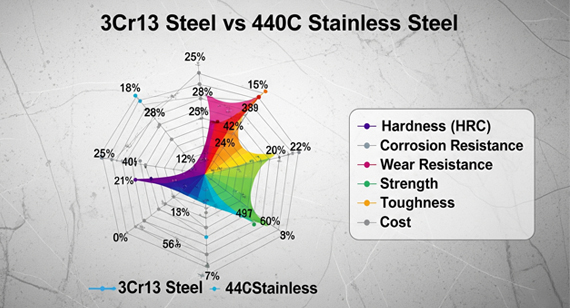
Corrosion Resistance
Verdict: 440C is significantly better for environments with high humidity, salt, or chemicals.
Wear Resistance
Verdict: 440C excels in wear-intensive applications; 3Cr13 is more suited for non-critical wear parts.
Hardness
Verdict: 440C is much harder and retains cutting edges better.
Edge Retention
Verdict: 440C is superior in edge retention.
Machinability
Verdict: 3Cr13 is the better option for efficient CNC machining.
Impact Toughness (Joules)
Verdict: 3Cr13 performs better in impact-prone applications.
Sharpening
Verdict: 3Cr13 is easier and faster to resharpen.
Brittleness
Verdict: For flexibility and toughness, 3Cr13 is preferred.
Toughness
Verdict: 3Cr13 wins in applications needing toughness over rigidity.
Rust Resistance
Verdict: 440C has superior rust resistance.
Choosing between high hardness or machinability? Let VMT guide you through selecting the best stainless steel CNC machining material. We offer 3Cr13 steel CNC machining parts and 440C stainless steel CNC machining parts customized to your application.
Here's a comparison table summarizing the general properties of 3Cr13 steel vs. 440C stainless steel. This table will help engineers, buyers, and CNC machining specialists quickly assess which material best suits their application needs:
General Properties Comparison: 3Cr13 vs. 440C Stainless Steel
| Property |
3Cr13 Steel |
440C Stainless Steel |
Better For |
| Corrosion Resistance |
Moderate – performs well in dry or mild environments | Excellent – ideal for marine, chemical, or high-humidity environments | 440C |
| Wear Resistance |
Fair – sufficient for general use | Excellent – maintains integrity under friction and abrasion | 440C |
| Hardness (HRC) |
52–54 HRC (after heat treatment) | 58–60 HRC (after heat treatment) | 440C |
| Edge Retention |
Moderate – dulls faster, needs frequent sharpening | High – retains sharpness for longer durations | 440C |
| Machinability |
High – easy to machine, polish, and finish | Low – difficult to machine, requires slower speeds and carbide tools | 3Cr13 |
| Impact Toughness |
Good – resists shock, flexible under force | Lower – higher brittleness under impact | 3Cr13 |
| Sharpening |
Easy – can be sharpened with basic tools | Difficult – requires diamond abrasives or precision sharpeners | 3Cr13 |
| Brittleness |
Low – more ductile and forgiving | Higher – prone to chipping or cracking under impact | 3Cr13 |
| Toughness |
Higher toughness – better for dynamic applications | Lower toughness – optimized for wear and hardness | 3Cr13 |
| Rust Resistance |
Basic – may rust in humid/saline environments | High – excellent resistance to rust and oxidation | 440C |
Summary:
Looking for reliable CNC partners? VMT’s CNC machining services deliver precision parts from both 3Cr13 steel and 440C stainless steel, optimized for your performance and budget needs.
Mechanical properties are critical indicators when selecting materials for CNC machining parts, especially in demanding applications such as cutting tools, medical instruments, and structural components. When comparing 3Cr13 steel and 440C stainless steel, engineers often focus on key mechanical metrics like hardness, tensile strength, ductility, and thermal processing temperatures.
While both belong to the martensitic stainless steel family, their performance under stress, load, and heat varies significantly due to differences in carbon content, alloying elements, and microstructure after heat treatment. Understanding these differences is essential for optimizing tool performance, minimizing tool wear, and ensuring long-term durability of machined components.
Let’s dive into the individual properties that differentiate these two steels in practical CNC machining and functional applications.
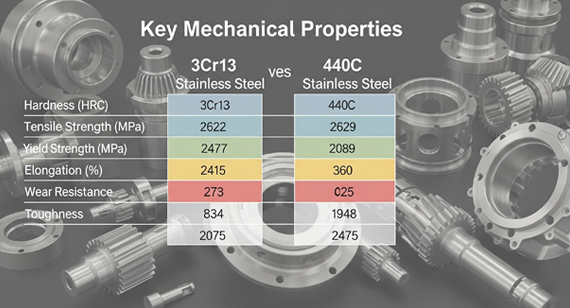
Hardness (HRC)
Hardness is a measure of a material’s resistance to deformation and wear. 440C significantly outperforms 3Cr13 in hardness due to its higher carbon content, making it ideal for cutting edges and precision wear components. However, higher hardness can make machining more difficult.
Hardness (HV - Vickers)
Vickers hardness values reinforce that 440C provides greater wear resistance, crucial for applications like bearings, valves, and surgical blades.
Hardness (HRC/HRB)
These measurements emphasize the superior performance of 440C in maintaining sharpness and resisting indentation.
Tensile Strength (MPa)
Tensile strength indicates the maximum stress the material can withstand before breaking. 440C offers stronger resistance under tension, making it more reliable in load-bearing parts.
Elongation Strength (Rp0.2/MPa)
This property defines the stress required to produce a small, permanent deformation. 440C has greater resistance to plastic deformation, beneficial in precision parts that must retain form.
Ductility (%)
Ductility is the ability of a material to deform without fracturing. 3Cr13 has much higher ductility, making it less brittle and more suitable for impact or vibration-prone parts.
Yield Strength (MPa)
Yield strength reflects the stress at which a material begins to deform plastically. 440C offers superior resistance to yield, enhancing performance in structural and high-load components.
Shrinkage (Z/%)
Shrinkage under tensile conditions affects dimensional stability during use. 3Cr13’s higher shrinkage correlates with its better ductility and formability.
Heating Temperature (Quenching/Tempering)
3Cr13 Steel:
440C Stainless Steel:
Both steels require precise heat treatment for optimal properties. 440C demands tighter control to avoid brittleness, while 3Cr13 offers a broader processing range, which is favorable in CNC machining factories.
Choosing the right steel for your next project? VMT’s experienced team offers high-performance 3Cr13 steel CNC machining parts and 440C stainless steel CNC machining parts tailored to your application’s mechanical requirements.
Here's a clear and professional comparison table outlining the key mechanical properties of 3Cr13 steel vs. 440C stainless steel, specifically crafted for CNC machining decision-making:
Mechanical Properties Comparison: 3Cr13 Steel vs. 440C Stainless Steel
| Property |
3Cr13 Steel |
440C Stainless Steel |
Remarks / Application Impact |
| Hardness (HRC) |
52–54 | 58–60 | 440C is significantly harder—ideal for wear-resistant cutting tools. |
| Hardness (HV) |
500–550 | 600–700 | Higher Vickers hardness in 440C enhances edge retention and wear resistance. |
| Hardness (HRB) |
~98 | >100 | 440C maintains superior resistance to surface indentation. |
| Tensile Strength (MPa) |
750–950 | 760–1090 | Both offer high strength; 440C is slightly stronger, suitable for high-stress parts. |
| Elongation Strength (Rp0.2/MPa) |
~550 | ~700 | 440C withstands more stress before plastic deformation begins. |
| Ductility (%) |
15–17 | 2–4 | 3Cr13 is more ductile, better for impact-prone or flexible applications. |
| Yield Strength (MPa) |
400–600 | 680–750 | 440C resists yielding under heavy mechanical loads. |
| Shrinkage (Z/%) |
50–60 | 20–30 | 3Cr13 has higher plasticity and is easier to form. |
| Heating Temperature – Quench (°C) |
1000–1050 | 1010–1065 | Both require high quenching temperatures; precise control needed for 440C. |
| Heating Temperature – Temper (°C) |
200–300 | 150–300 | 3Cr13 offers more forgiving tempering for machining flexibility. |
Summary:
For high-precision projects, VMT offers expert stainless steel CNC machining services—including parts made from 3Cr13 steel and 440C stainless steel—tailored to your design and durability needs.
Physical properties are fundamental when choosing materials for applications involving thermal loads, dimensional stability, and electromagnetic conditions. These attributes influence how a material reacts to temperature changes, how efficiently it conducts heat, and how stable it remains under environmental or operational stress.
For CNC machining, understanding these physical properties ensures that the material will perform consistently during processing and in final use. Let’s explore how 3Cr13 steel and 440C stainless steel differ in aspects like density, conductivity, expansion, and magnetism.
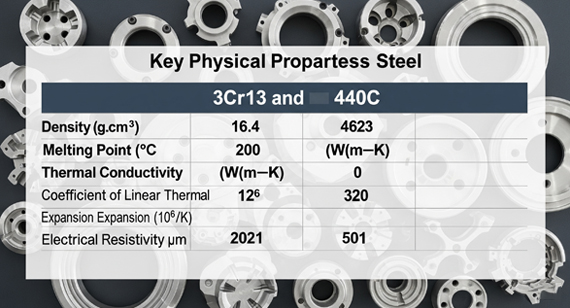
Density (g/cm³)
Both materials have similar densities, typical of martensitic stainless steels. The slight increase in 440C comes from its higher carbon and alloy content.
Melting Point (°C)
Both steels have high melting points, allowing them to withstand elevated machining and application temperatures without deforming.
Specific Heat Capacity (J/kg·K)
They share similar heat absorption capacity, meaning neither material will rapidly heat or cool, helping ensure thermal stability during CNC operations.
Thermal Conductivity (W/m·K)
Both are moderate conductors of heat. This affects how heat dissipates during machining, making coolant selection and cutting speeds important.
Thermal Expansion
Linear Thermal Expansion Coefficient (10⁻⁶/K)
Both materials exhibit low thermal expansion, which helps maintain precision in CNC-machined parts when exposed to temperature changes.
Resistivity (μΩ·m)
These values indicate low electrical conductivity, typical of stainless steels, and important for applications where electrical insulation or resistance to electrical interference is needed.
Modulus of Elasticity (kN/mm²)
Elastic modulus defines a material’s stiffness. Both materials exhibit excellent stiffness, which is critical for maintaining dimensional accuracy under stress.
Magnetic Properties
As martensitic stainless steels, both are strongly magnetic. This makes them suitable for applications where magnetic response is needed—but unsuitable for non-magnetic requirements.
Choosing the right steel? VMT offers CNC machining services for both 3Cr13 steel CNC machining parts and 440C stainless steel CNC machining parts, applying deep understanding of material behavior during and after processing.
Below is a comprehensive comparison table of the physical properties of 3Cr13 steel and 440C stainless steel, designed to assist engineers, buyers, and CNC machining specialists in selecting the most suitable material for their application:
Physical Properties Comparison: 3Cr13 Steel vs. 440C Stainless Steel
| Property |
3Cr13 Steel |
440C Stainless Steel |
Remarks / Application Impact |
| Density (g/cm³) |
~7.70 | ~7.75 | Very similar; minimal weight difference in finished parts. |
| Melting Point (°C) |
1450–1500 | 1480–1530 | High resistance to heat, suitable for high-temperature applications. |
| Specific Heat Capacity (J/kg·K) |
~460 | ~460 | Both provide stable heat absorption; useful in thermal cycling environments. |
| Thermal Conductivity (W/m·K) |
~25 | ~24 | Moderate; effective cooling is needed during CNC machining. |
| Linear Thermal Expansion (10⁻⁶/K) |
~10.4 | ~10.2 | Low expansion = stable dimensions in temperature-fluctuating environments. |
| Resistivity (μΩ·m) |
0.60–0.70 | 0.60–0.80 | Low conductivity; suitable where electrical insulation is required. |
| Modulus of Elasticity (kN/mm²) |
~200 | 200–210 | High stiffness for structural stability in precision CNC parts. |
| Magnetic Properties |
Magnetic (ferromagnetic) | Magnetic (ferromagnetic) | Not suitable for non-magnetic applications. |
Summary:
Looking for precise CNC components with minimal thermal distortion? VMT’s expert stainless steel CNC machining services ensure accuracy and performance for both 3Cr13 steel CNC machining parts and 440C stainless steel CNC machining parts.
Heat treatment is a critical process in preparing stainless steels for final use, especially when targeting specific mechanical properties such as hardness, toughness, and wear resistance. For CNC machining, understanding how each alloy responds to heat treatment is essential for controlling dimensional stability, machinability, and surface finish.
Both 3Cr13 steel and 440C stainless steel are martensitic stainless steels, meaning they are hardenable by heat treatment. However, their different chemical compositions—particularly in carbon content—lead to distinct heat treatment protocols and results.
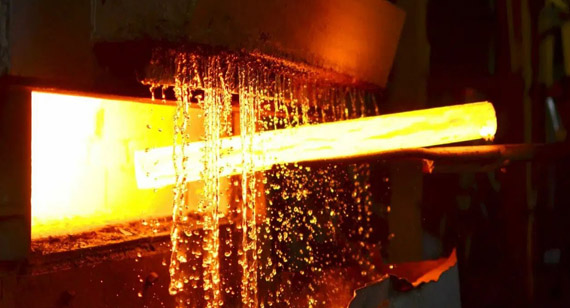
3Cr13 Steel Heat Treatment
3Cr13 steel has moderate carbon content (~0.30%), which gives it a balanced combination of hardenability and toughness. It responds well to standard hardening and tempering cycles, making it popular for knives, machine parts, and structural components.
Machining Note: It's common to machine 3Cr13 in the annealed condition and then perform final heat treatment.
440C Stainless Steel Heat Treatment
440C stainless steel has a much higher carbon content (~1.0%), enabling superior hardness and wear resistance, but it’s also more brittle and sensitive to temperature control. Precise heat treatment is crucial to avoid cracking or excessive warping.
Machining Note: Due to its high hardness post-treatment, 440C should be fully machined prior to hardening. Post-hardening machining requires specialized carbide tools and slower speeds.
Summary
| Heat Treatment Stage |
3Cr13 Steel |
440C Stainless Steel |
| Annealing Temp (°C) |
750–800 | 850–900 |
| Hardening Temp (°C) |
1000–1050 | 1010–1065 |
| Quenching Medium |
Oil or air | Oil or air (optional cryogenic treatment) |
| Tempering Temp (°C) |
200–300 | 150–300 |
| Final Hardness (HRC) |
52–54 | 58–60 |
| Machining Tip |
Machine in annealed state | Machine before heat treatment |
Recommendation:
VMT offers expert-level CNC machining for hardened and annealed stainless steels. Whether you need high-precision 3Cr13 steel CNC machining parts or ultra-hard 440C stainless steel CNC machining parts, our facilities are equipped to deliver accurate and consistent results.
When selecting the right stainless steel for CNC machining or product applications, it’s essential to consider not just chemical and mechanical properties—but also real-world performance factors. 3Cr13 steel and 440C stainless steel serve different needs in terms of hardness, corrosion resistance, ease of machining, and cost-efficiency. Understanding the pros and cons of each material helps users make informed decisions based on application demands, budget, and processing requirements.
Advantages of 3Cr13 Steel
3Cr13 steel is a martensitic stainless steel that offers a well-balanced combination of performance and affordability. Its moderate carbon and chromium content make it suitable for everyday tools and applications that require reliable mechanical strength without the cost of premium alloys.
3Cr13 is economically advantageous, especially for large-volume production or cost-sensitive projects.
While not the hardest stainless steel, it provides sufficient strength for general-purpose cutting tools, utility blades, and mechanical parts.
This material machines well in the annealed state and is less taxing on tools than harder steels, reducing CNC machining costs and tool wear.
With proper quenching and tempering, 3Cr13 can reach a solid working hardness (~52–54 HRC), making it versatile for many industries.
It’s ideal for household knives, scissors, and industrial parts that don’t face extreme environments or corrosive exposure.
Disadvantages of 3Cr13 Steel
Despite its versatility, 3Cr13 steel does have limitations, especially in demanding industrial or marine environments.
Edge retention is moderate, so blades and cutting tools may dull faster with heavy or abrasive use.
Compared to austenitic or high-chromium stainless steels, its corrosion resistance is lower—especially in saltwater or acidic environments.
It doesn't reach the tensile or yield strength of tool steels or premium martensitic grades like 440C.
In applications involving friction, cutting, or impact, 3Cr13 may show wear faster, shortening its service life.
Elevated temperatures may cause it to soften or degrade faster than more advanced stainless steels.
Advantages of 440C Stainless Steel
440C stainless steel is widely known for its exceptionally high carbon content and hardness. It’s one of the strongest and most wear-resistant stainless steels available, especially when heat-treated properly.
This makes 440C ideal for precision cutting tools, ball bearings, and wear-prone components.
Thanks to its high carbon and chromium content, it resists friction and maintains edge sharpness for longer durations.
It performs better in mildly corrosive environments such as food processing, medical tools, or humid conditions.
440C retains its shape under thermal cycling and mechanical stress—ideal for precision CNC machined parts.
Frequently used in aerospace, medical, and high-end knife industries where strength, hygiene, and wear resistance are critical.
Disadvantages of 440C Stainless Steel
Despite its performance, 440C stainless steel comes with challenges in manufacturing and application cost.
The higher alloy content and processing difficulty drive up raw material and machining costs.
Its hardness—especially after heat treatment—can increase tool wear, requiring carbide tooling and lower feed rates.
The high hardness comes at the cost of reduced impact resistance. In applications prone to sudden shocks or dynamic loads, it may chip or crack.
Improper quenching or tempering can lead to retained austenite, cracking, or underperformance.
In low-wear environments, its premium properties may not justify the cost or processing effort.
Whether your application needs cost-efficient 3Cr13 steel CNC machining parts or high-precision 440C stainless steel CNC machining parts, VMT offers custom stainless steel CNC machining services designed for optimal performance and value.
Here's a clear and detailed comparison table summarizing the advantages and disadvantages of 3Cr13 steel and 440C stainless steel, ideal for quick reference when selecting materials for CNC machining or product development:
Advantages and Disadvantages of 3Cr13 vs. 440C Stainless Steel
| Category |
3Cr13 Steel |
440C Stainless Steel |
| Key Strengths |
- Cost-effective - Easy to machine and process - Balanced hardness and toughness - Good for general use |
- Very high hardness (up to 60 HRC) - Excellent wear resistance - Better corrosion resistance than 3Cr13 - Ideal for precision applications |
| Heat Treatment |
- Easy to harden and temper - Final hardness around 52–54 HRC |
- Requires precise control - Can reach 58–60 HRC |
| Corrosion Resistance |
- Moderate, not ideal for harsh environments | - Good for humid or mildly corrosive settings |
| Wear Resistance |
- Fair, but wears faster under abrasion | - Excellent; maintains edge and integrity longer |
| Machinability |
- Easy to machine in annealed condition |
- Difficult to machine post-hardening - Requires carbide tooling |
| Toughness |
- Good impact resistance | - Lower; more brittle under shock loads |
| Cost |
- Lower raw material and machining cost | - Higher material and processing cost |
| Best For |
- Kitchen tools, general-use knives, structural parts | - High-end knives, surgical tools, ball bearings, aerospace parts |
| Limitations |
- Dulls faster - Less corrosion-resistant - Loses hardness at high temp |
- Brittle in some cases - Costly for non-critical uses - Demands skilled processing |
Quick Tip:
Need help deciding which is better for your CNC parts? Contact VMT, your trusted partner for stainless steel CNC machining services, with deep expertise in 3Cr13 steel CNC machining parts and 440C stainless steel CNC machining parts.
Both 3Cr13 steel and 440C stainless steel are martensitic stainless steels widely used in CNC machining due to their mechanical strength, hardness, and corrosion resistance. However, their distinct compositions and performance characteristics make them ideal for different application areas. From kitchen utensils to high-precision medical tools, each grade has its own niche.

Kitchen Knives
CNC Part Examples:
Outdoor Knives
CNC Part Examples:
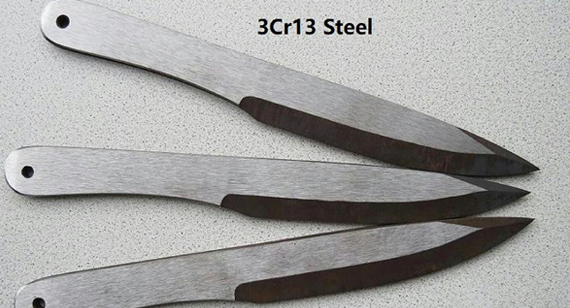
Surgical Instruments
CNC Part Examples:
Marine Applications
CNC Part Examples:
Chemical Processing
CNC Part Examples:
Building and Construction
CNC Part Examples:
Food and Beverage Industry
CNC Part Examples:
CNC Part Examples:
CNC Part Examples:
Summary Table of Applications
| Industry |
3Cr13 Steel |
440C Stainless Steel |
| Kitchenware |
Standard knives, utility cutlery | High-end chef knives, premium sets |
| Outdoor Equipment |
Camping tools, survival knives | Tactical knives, premium folding blades |
| Medical |
Disposable surgical tools | Surgical blades, orthopedic tools |
| Marine |
Limited use | Corrosion-resistant marine parts |
| Chemical Industry |
Light chemical components | Pump parts, seals |
| Construction |
Structural hardware | Decorative stainless trim |
| Food Processing |
Economy blades and fixtures | Sanitary and hygienic cutting components |
| Automotive |
Hinges, supports | Bearings, precision shafts |
For every industry, VMT provides stainless steel CNC machining services backed by years of precision manufacturing. From 3Cr13 steel CNC machining parts to 440C stainless steel CNC machining parts, our team ensures accuracy, durability, and cost-efficiency.
When selecting materials for stainless steel CNC machining projects, price plays a vital role alongside performance. While 3Cr13 steel and 440C stainless steel are both martensitic stainless steels, their costs can differ significantly due to differences in composition, machinability, and end-use lifespan. Understanding the initial costs and long-term value of each helps buyers and engineers make strategic material choices—whether for mass production or precision part fabrication.
Initial Cost Comparison
From a raw material and manufacturing perspective, 3Cr13 steel is considerably more affordable than 440C stainless steel. This cost difference stems from both the lower alloy content and better machinability of 3Cr13.
3Cr13 Steel
440C Stainless Steel
Conclusion: For projects focused on upfront savings—especially those with high part volumes or less stringent performance demands—3Cr13 steel CNC machining parts offer a more budget-friendly solution.
Long-term Cost Benefits
Although 440C stainless steel is more expensive initially, it offers superior long-term durability, which can offset its upfront cost in high-performance or extended-use applications.
Durability and Wear Resistance
Corrosion Resistance and Downtime Prevention
Return on Investment (ROI)
Conclusion: For high-precision, long-life, or safety-critical components, 440C stainless steel CNC machining parts deliver better value despite the higher initial cost. However, for general-purpose components and large-scale production, 3Cr13 steel remains a reliable and cost-effective alternative.
Want help estimating total CNC production cost using different steel grades? VMT’s team of experts can provide precise quotes based on your material choice, tolerances, and application.
Here's a clear and professional comparison table highlighting the cost and price differences between 3Cr13 steel and 440C stainless steel, with a focus on both initial costs and long-term value for CNC machining applications.
Table: 3Cr13 Steel vs. 440C Stainless Steel – Cost and Price Comparison
| Category |
3Cr13 Steel |
440C Stainless Steel |
| Raw Material Cost |
Low – ~30% to 50% cheaper than 440C | High – Premium grade due to higher carbon and chromium content |
| Machining Cost |
Low – Easy to cut, less tool wear, faster processing | High – Requires slower feed rates, advanced tooling, and more frequent tool changes |
| Heat Treatment Cost |
Moderate – Simple hardening and tempering | High – Requires precise control and extended processing times |
| Tool Wear |
Minimal – Excellent machinability | Significant – Hardness causes faster tool degradation |
| Replacement Frequency |
Higher – Wears faster under stress and corrosion | Lower – Excellent wear and corrosion resistance, longer lifespan |
| Maintenance Needs |
Frequent – May rust, dull, or degrade in tough environments | Low – Minimal maintenance required in corrosive or demanding conditions |
| Lifecycle Cost |
Lower upfront, but higher long-term due to replacements and maintenance | Higher upfront, but better long-term value |
| Ideal for |
Cost-sensitive, general-purpose, short-cycle applications | Long-life, high-precision, safety-critical, or corrosive environment applications |
| Typical CNC Use Cases |
Budget knives, housings, brackets, structural parts | Bearings, surgical tools, precision blades, marine fittings |
Summary:
Need a custom CNC machining quote based on material selection? Contact VMT, a trusted name in stainless steel CNC machining services and CNC machining factories.
Choosing the right stainless steel for your CNC machining project involves more than comparing price tags. It requires a careful balance of factors—application environment, mechanical demands, cost constraints, and longevity expectations. Both 3Cr13 stainless steel and 440C stainless steel serve important roles in manufacturing, but they excel in different contexts. This section helps clarify when each grade is the better option based on performance characteristics and end-use requirements.
When Should 3Cr13 Stainless Steel Be Used?
3Cr13 stainless steel is ideal for applications that demand moderate corrosion resistance, good toughness, and affordable cost. It offers a practical solution when budget is a major consideration or when components do not require extreme hardness or long-term wear resistance.
Use 3Cr13 stainless steel when:
Typical Applications:
When Should 440C Stainless Steel Be Used?
440C stainless steel is the material of choice for high-performance, high-durability applications. With its excellent hardness, wear resistance, and corrosion protection, it’s designed for demanding environments and critical components.
Use 440C stainless steel when:
Typical Applications:
Decision Tip:
If you're looking for a balance of affordability and decent performance, choose 3Cr13 steel. But if your project demands superior wear, strength, and corrosion resistance, opt for 440C stainless steel—especially for long-life or safety-critical CNC components.
Below is a clear and professional comparison table to help you quickly determine when to use 3Cr13 stainless steel vs. 440C stainless steel in CNC machining applications.
Table: Choosing Between 3Cr13 and 440C Stainless Steel
| Criteria |
3Cr13 Stainless Steel |
440C Stainless Steel |
| Cost |
Low-cost, budget-friendly | High-cost, premium material |
| Machinability |
Easy to machine, lower tool wear | Harder to machine, requires precision tooling |
| Hardness (After Heat Treatment) |
Moderate (≈52–54 HRC) | High (up to 60 HRC) |
| Edge Retention |
Moderate | Excellent |
| Corrosion Resistance |
Moderate (suitable for dry or mild environments) | High (resistant to moisture, chemicals, and saltwater) |
| Wear Resistance |
Moderate – wears faster under abrasive conditions | High – ideal for high-friction applications |
| Best for Use In |
General-purpose tools, budget knives, indoor components | Surgical tools, marine parts, bearings, high-end knives |
| Heat Treatment Stability |
Stable but with potential dimensional changes | Excellent stability, minimal distortion |
| Aesthetic Finish |
Acceptable for functional use | Can be polished to mirror or decorative finish |
| Tooling and Processing Cost |
Low – easy CNC processing | High – harder steel increases tool wear and time |
| Typical Lifespan |
Short to medium (frequent replacement in heavy use) | Long (ideal for long-term, heavy-duty applications) |
| Recommended For |
Cost-sensitive projects with basic mechanical needs | High-performance parts requiring strength, precision, and durability |
Summary:
Looking for expert help with selecting and machining the right material? Contact VMT, a trusted partner in stainless steel CNC machining services and high-precision CNC machining factories.
Yes, 3Cr13 stainless steel is a good choice for knives—especially for general-purpose, budget-friendly applications. It is widely used in the cutlery industry due to its balanced properties of hardness, toughness, corrosion resistance, and affordability. While it may not match the performance of premium steels like 440C, VG10, or S35VN, it serves its purpose well for users who don’t require extreme edge retention or frequent heavy-duty cutting.
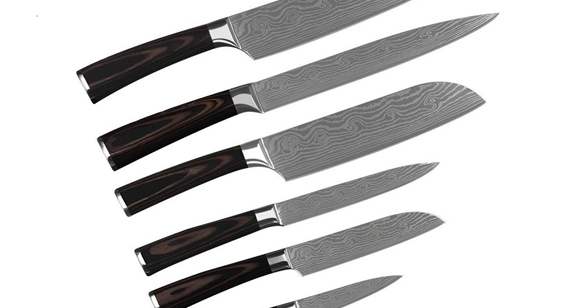
Why 3Cr13 Works Well for Knives
3Cr13 stainless steel contains approximately 13% chromium and 0.3% carbon, which offers decent corrosion resistance and good hardness after heat treatment. It can achieve a hardness of 52–54 HRC, making it hard enough to hold a sharp edge for regular kitchen or outdoor use while remaining easy to sharpen.
Its toughness ensures that it won’t chip easily under light impact, and its machinability makes it easy and cost-effective to mass-produce knives through CNC machining or forging. In fact, many entry-level or mid-range knives on the market today—including pocket knives, hunting knives, and household kitchen knives—are made from 3Cr13 because of this balance.
Limitations to Consider
However, 3Cr13 is not ideal for users who need:
Best Uses for 3Cr13 Knives
In CNC machining, 3Cr13 steel CNC machining parts are cost-effective to produce and widely used in low- to medium-load knife components due to their ease of fabrication.
Conclusion
If you're looking for a knife that is affordable, easy to sharpen, and sufficiently durable for everyday tasks, then 3Cr13 stainless steel is a solid choice. While it may not compete with high-end alloys in specialized environments, it strikes an ideal balance for mass-market or beginner knife applications.
Need precision knife components made from 3Cr13 or another stainless steel grade? VMT offers expert stainless steel CNC machining services to bring your designs to life.
When it comes to sourcing high-precision stainless steel CNC machining parts, VMT stands out as a trusted partner for businesses worldwide. With decades of experience and advanced production capabilities, VMT CNC machining factory specializes in machining various grades of stainless steel—including 3Cr13 steel, 440C stainless steel, and other popular alloys used in demanding industries.
Comprehensive Stainless Steel CNC Machining Services
VMT offers end-to-end CNC machining services for stainless steel components, from prototype to full-scale production. Whether it’s precision milling, turning, drilling, or surface finishing, VMT ensures tight tolerances, consistent quality, and fast turnaround times. The company works with multiple stainless steel grades, including:
Why Choose VMT for Your Stainless Steel Projects?
Industries Served
VMT provides stainless steel CNC machining services to industries such as:
Whether you're developing a new product or optimizing an existing design, VMT offers the engineering support and manufacturing capability to deliver durable, precise, and cost-effective stainless steel CNC parts. From 3Cr13 steel for affordable utility parts to 440C stainless steel for high-end wear-resistant applications, VMT is your one-stop solution.
Contact VMT today to request a quote or learn more about how their CNC machining services can support your next project.
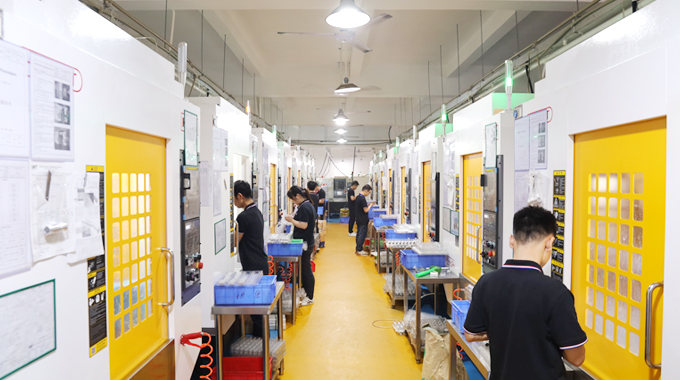
Choosing between 3Cr13 steel and 440C stainless steel ultimately depends on the specific demands of your application. While both are classified as martensitic stainless steels, they offer distinctly different performance profiles—each suited to unique industrial needs.
3Cr13 stainless steel is a versatile, budget-friendly material that performs reliably in general-purpose applications. Its balanced hardness, ease of machining, and reasonable corrosion resistance make it a strong candidate for everyday tools, kitchen knives, and structural parts where high strength or prolonged exposure to harsh environments is not critical. For companies looking to reduce production costs without sacrificing baseline performance, 3Cr13 steel CNC machining parts are a practical solution.
On the other hand, 440C stainless steel stands out for its exceptional hardness, wear resistance, and corrosion protection. It's the material of choice for high-precision, high-durability components such as surgical tools, ball bearings, and marine-grade hardware. While more expensive and difficult to machine, 440C stainless steel CNC machining parts offer significant long-term value in demanding environments, especially where sharpness retention, surface finish, or mechanical reliability is paramount.
Both steels are widely supported by advanced CNC machining services, and VMT’s machining capabilities cover the full spectrum—from cost-sensitive 3Cr13 components to performance-critical 440C precision parts. Whether you're a product designer, procurement manager, or engineer, selecting the right steel alloy is key to ensuring functional success, manufacturing efficiency, and cost control.
Is 3Cr13 better than 440?
No, 3Cr13 is not generally better than 440C. While 3Cr13 is more affordable and easier to machine, 440C stainless steel outperforms it in hardness, wear resistance, edge retention, and corrosion resistance. 3Cr13 is suitable for light-duty applications, whereas 440C excels in high-performance tools and precision parts.
Is 3Cr13 a good stainless steel?
Yes, 3Cr13 is considered a good stainless steel for cost-effective applications. It offers a balanced combination of hardness, corrosion resistance, and machinability, making it ideal for kitchen knives, utility tools, and budget-friendly CNC machining parts.
What steel is 3Cr13 equivalent to?
3Cr13 stainless steel is roughly equivalent to AISI 420 or SUS420J2 in Western standards. It’s a martensitic stainless steel with moderate carbon and chromium content, known for moderate hardness and corrosion resistance.
Which is better, 410 or 316 stainless steel?
316 stainless steel is better in terms of corrosion resistance, especially in marine or chemical environments. 410 stainless steel, like 3Cr13, offers better hardness but lower corrosion resistance. Use 410 for wear resistance and 316 for corrosion protection.
What is the difference between 440C and 316 stainless steel?
440C stainless steel is a high-carbon, high-hardness grade ideal for cutting tools and wear-resistant parts. 316 stainless steel is an austenitic alloy known for excellent corrosion resistance, especially in chloride-rich environments. Choose based on wear vs. corrosion priorities.
What is the highest quality stainless steel?
The highest quality stainless steels include 316L, 440C, and S30V, depending on the intended application. For corrosion resistance, 316L is preferred. For blades and wear resistance, 440C or powder-metallurgy steels like CPM S90V are superior.
What are the grades of cheap stainless steel?
Common lower-cost stainless steel grades include 201, 430, and 3Cr13. These grades provide acceptable corrosion and mechanical properties for non-critical applications like decorative items, cutlery, or budget tools.
Why is 316 stainless steel so expensive?
316 stainless steel is expensive due to its high molybdenum and nickel content, which enhance its corrosion resistance—particularly in marine and chemical settings. This makes it ideal but costlier for demanding environments.
What are the three grades of stainless steel?
The three primary types are:
Is 440C steel good quality?
Yes, 440C stainless steel is a high-quality material for components that require exceptional hardness, edge retention, and corrosion resistance, such as knives, bearings, and surgical instruments.
Which steel has the sharpest blade?
Steels like 440C, VG10, S90V, and CPM M4 are known for their ability to hold a razor-sharp edge. Among these, 440C is widely used for its balance of hardness and corrosion resistance.
Will 3Cr13 steel rust?
Yes, 3Cr13 can rust if exposed to moisture or acidic environments for extended periods. While it has moderate corrosion resistance, it is not ideal for marine or high-humidity applications without proper care.
Is 410 stainless steel rustproof?
No, 410 stainless steel is not completely rustproof. Like 3Cr13, it offers moderate corrosion resistance and can rust over time in harsh or wet environments without protective coatings or maintenance.
What is the best number for stainless steel?
There’s no single “best” number—it depends on your needs. For corrosion resistance, 316 or 316L is best. For cutting and wear, 440C is preferred. For cost-effectiveness, 3Cr13 or 430 are commonly used.
Which is better, SS 304 or SS 410?
304 stainless steel is better for corrosion resistance and general-use applications, while 410 stainless steel offers higher hardness and wear resistance. Choose 304 for outdoor and food-grade applications and 410 for tooling or hardware.
Which specification of stainless steel is better?
“Better” depends on context:
Evaluate based on application and budget.
Is 440A or 440C better?
440C is better than 440A in terms of hardness, edge retention, and corrosion resistance. 440A is softer and easier to sharpen but less durable in long-term or high-friction use.
What is the toughest knife steel?
Knife steels like CPM 3V, S35VN, and ZDP-189 are considered among the toughest and most wear-resistant. However, 440C remains a strong choice for general performance and corrosion resistance in the CNC machining world.
Is 8Cr13MoV steel suitable for knives?
Yes, 8Cr13MoV is a Chinese stainless steel similar to AUS-8 and 440B. It’s popular for budget knife production due to its decent edge retention and corrosion resistance, though not as strong as 440C.
What is the difference between 440C and 8Cr13MoV?
440C has higher carbon content, resulting in better hardness and edge retention, while 8Cr13MoV is more affordable and easier to sharpen. For high-performance CNC machining parts and knife components, 440C is the superior choice.
